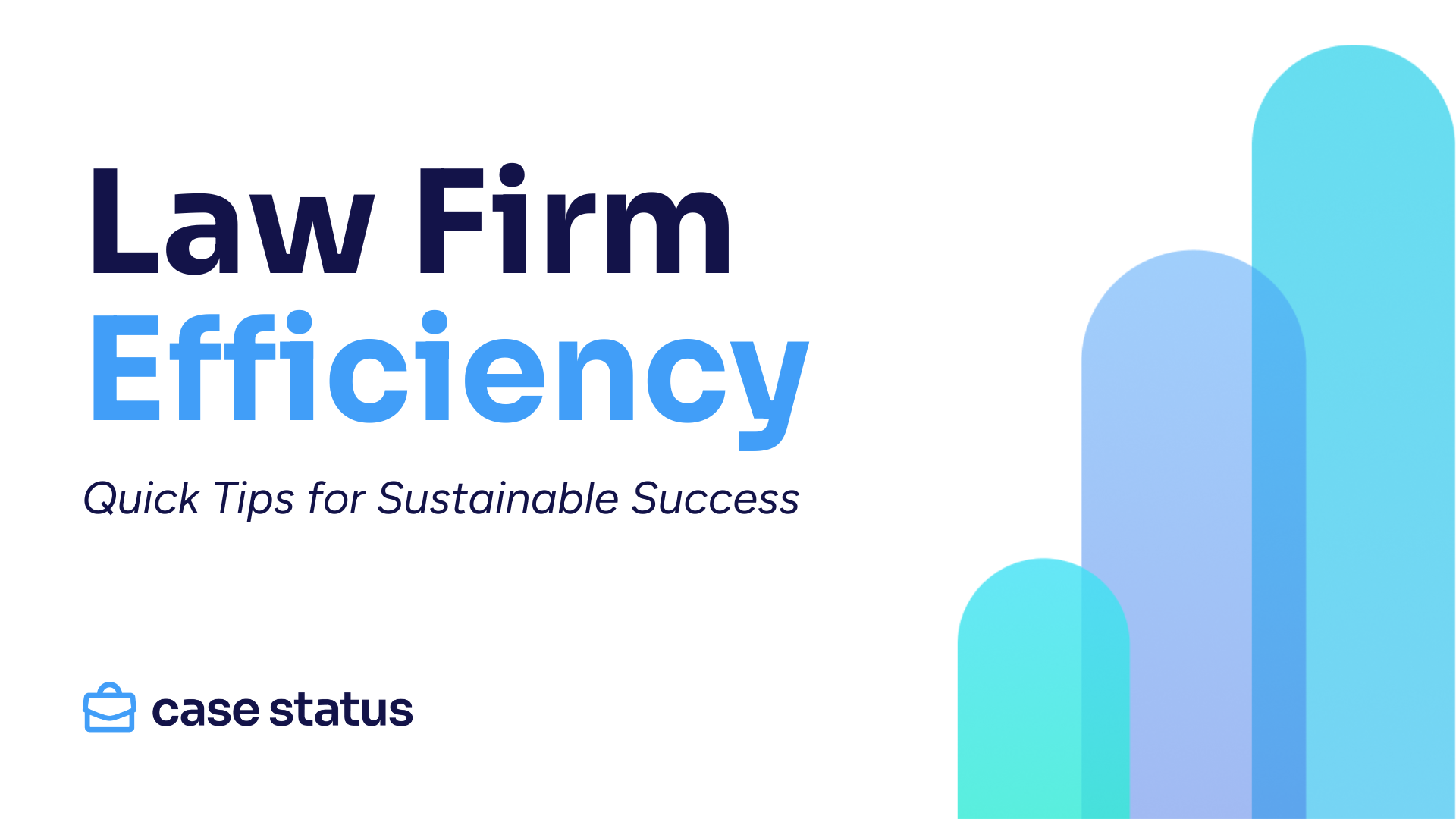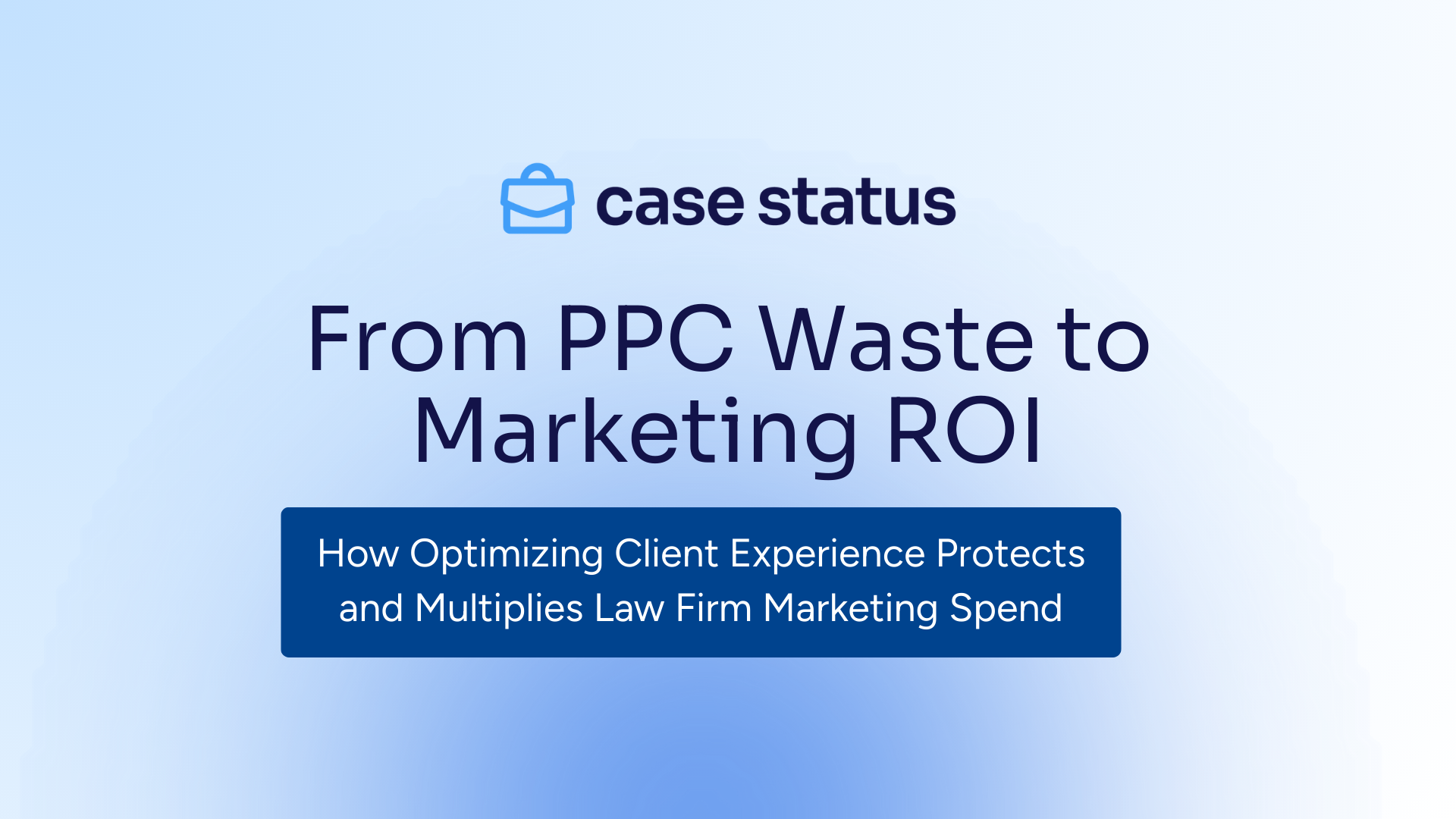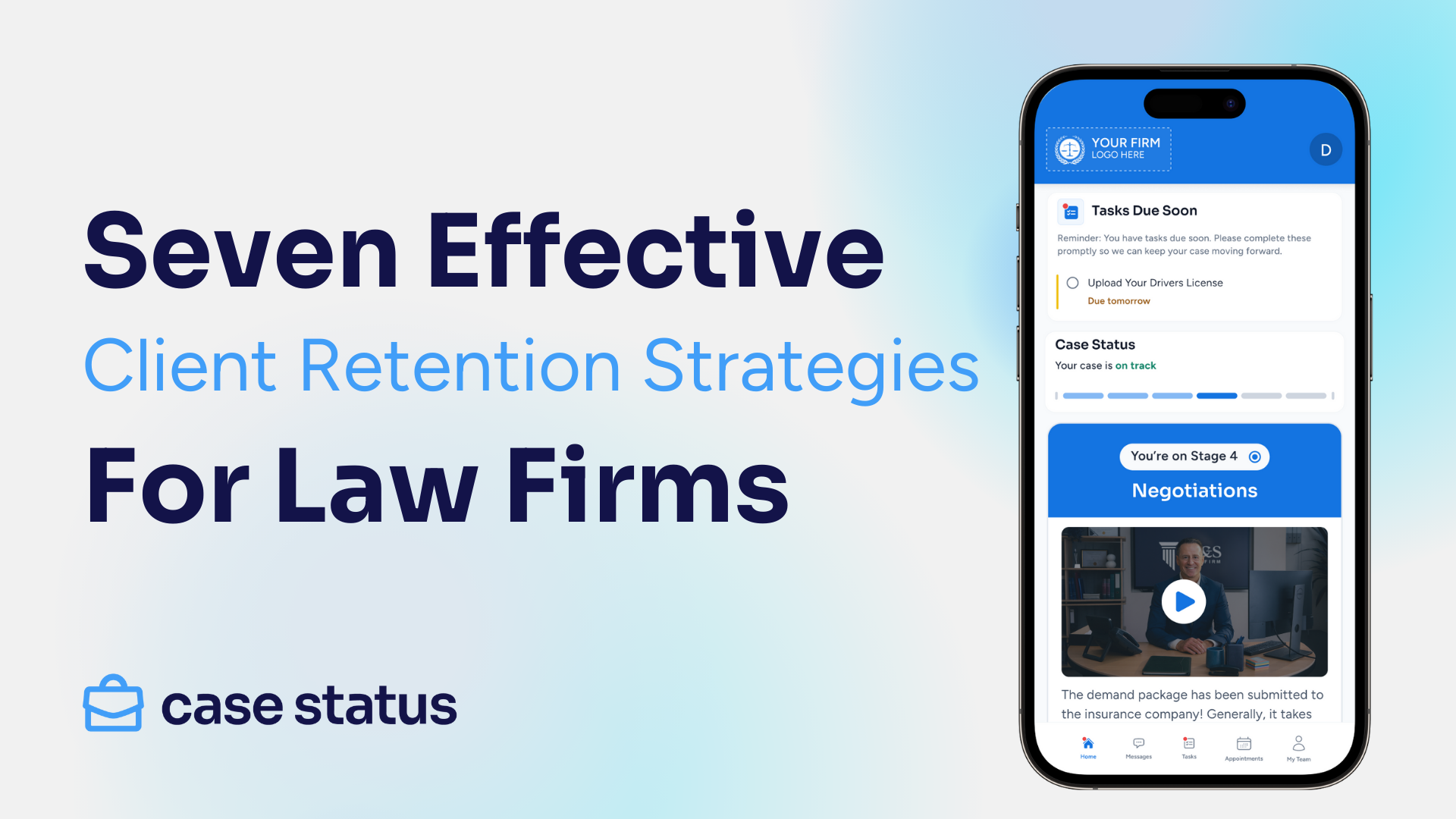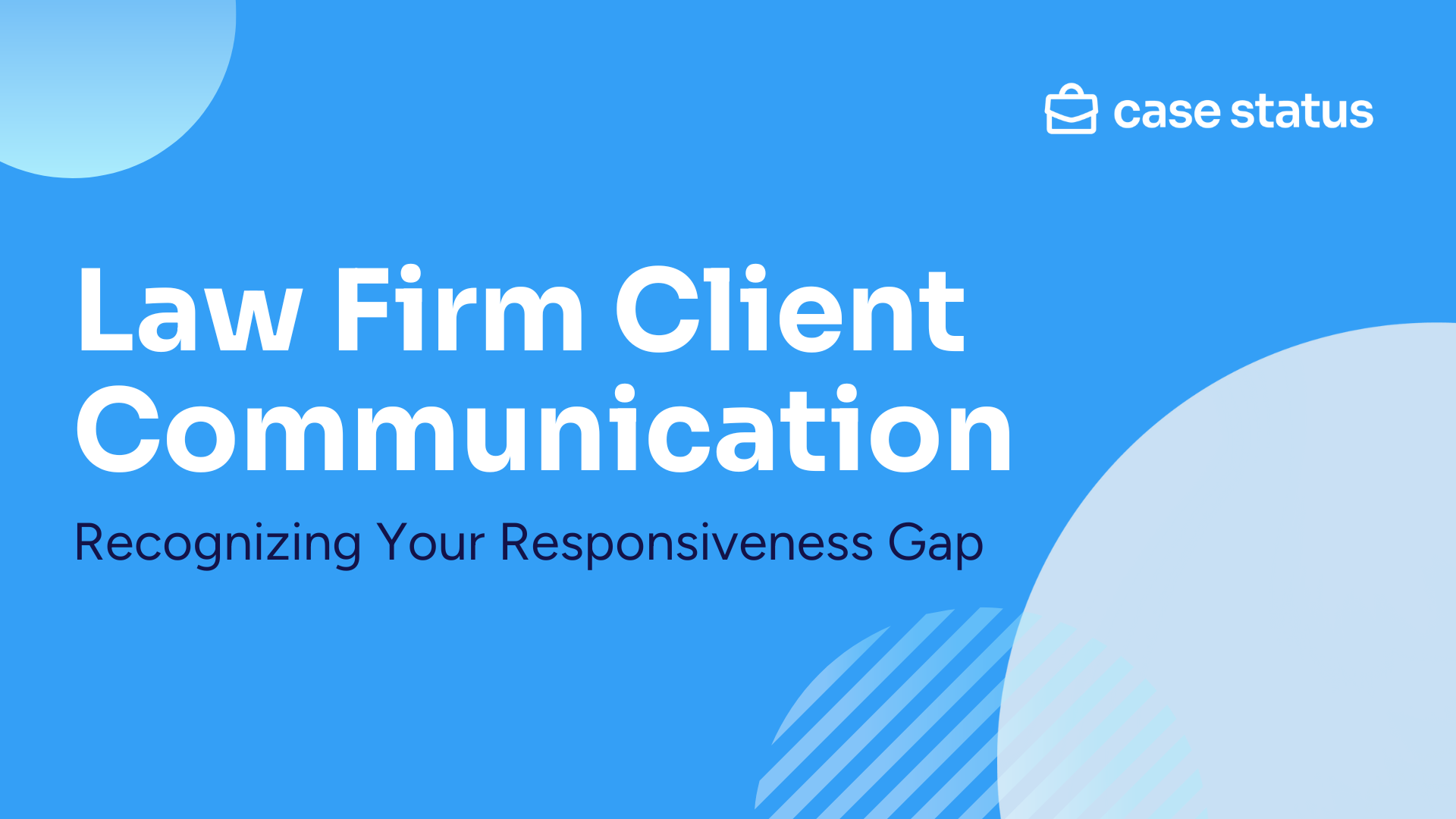
Law firm efficiency isn't just about doing more with less, but about doing the right things faster and smarter.
For law firms, efficiency drives sustainable growth, stronger client satisfaction, and higher profitability. Streamlined operations allow you to compete with larger firms, not by matching their resources, but by outpacing them in responsiveness and client experience as a differentiator.
This practical guide explores methods for enhancing efficiency, managing resources wisely, and maintaining superior client experiences. It also offers strategies for keeping overhead low and avoiding burnout without compromising service quality.
Small Firms Punch Above Their Weight
Efficiency directly affects case velocity, overhead, and client satisfaction. Smaller practices need to be more deliberate in how they run. Contrast this with larger firms, which can better absorb inefficiencies because of their extensive resources.
Increasing efficiency means more than just working harder; it's about working smarter. When your team delivers timely, streamlined service, your firm builds credibility and stands out in a crowded market.
The data confirms this approach works. Research from our 2025 Legal Client Experience Report shows firms that decrease response time directly improve client Net Promoter Scores (NPS).
Case velocity, the speed at which a firm moves matters from intake to resolution, shapes the entire client experience. Clients want closure. Efficient case resolution reduces stress, builds trust, and generates positive word-of-mouth and online reviews, leading to more referrals.
Faster resolution also means more cases handled annually, allowing smaller firms to grow revenue without increasing headcount.
Dig Deeper: Explore strategies that can directly improve law firm operations
Measure First: How Productive Is Your Firm?
Before improving efficiency in your law firm, it's important to understand your baseline productivity metrics. Key performance indicators (KPIs) to evaluate include:
- Annual billings: Highlights overall financial health based on total revenue generated yearly.
- Year-over-year billing comparisons: Identifies growth or decline trends.
- Cases per lawyer: Reflects individual attorney productivity.
- Average case cost per lawyer: Shows efficiency in resource allocation and case management.
- Case resolution time: Measures the average duration from case intake to closure, helping firms assess efficiency, improve case velocity and strengthen client satisfaction.
- Response time: Measures how quickly your firm responds to client inquiries. Faster responses improve client satisfaction and reveal communication efficiency.
According to our research, only 35% of firms measure response times as they relate to client experience, and just 25% measure total case resolution time. This measurement gap creates significant blind spots that prevent firms from identifying opportunities for improvement.
Dig Deeper: Explore practical strategies that teach you how to manage a law firm
Create New Processes to Increase Law Firm Growth
A well-run case benefits your clients and powers your firm's growth. From the first intake call to the final resolution, every step is an opportunity to simplify, automate, and keep things moving.
Tools like automated reminders, checklists, and real-time case updates reduce the back-and-forth, giving your team more time to focus on what moves the case forward.
Take client communication, for instance. Our recent survey of over 100 US attorneys reveals that 86% of respondents update clients on case status by phone or email every day. This adds up to a significant administrative burden, which could be solved with automation and an improved tech stack.
Here are some other areas where automation could be integrated into daily processes.
Digitize Document Delivery With Secure, Automated Uploads
Instead of emailing sensitive documents back and forth, firms can set up their client management system (CMS) to automatically push finalized pleadings or signed agreements to the client portal.
For example, when a settlement agreement is uploaded to Filevine, Case Status can immediately alert the client and make the document available in-app with no manual follow-up required.
Streamline Onboarding With Guided Digital Client Intake
Firms using cloud intake tools can guide clients through filling out personal information, uploading their ID, and e-signing retainers in a seamless workflow.
For instance, an immigration firm can guide new clients through a mobile-friendly intake form that syncs directly with their CMS. Thus, onboarding can be completed within a few hours instead of multiple days.
Accelerate Case Prep With Organized Discovery Workflows
When clients upload documents like medical records or insurance letters directly to the portal, firms can automatically categorize them based on predefined tags.
For example, a personal injury firm might automatically organize client-uploaded medical records into a medical chronology, sorted by treatment phase. This gives a clear, up-to-date picture of the client's recovery, making it easier to prepare demand packages or mediation briefs.
Keep Clients Informed With Automated Status Updates
By using tools with automation capabilities, firms can set up automated updates when a case reaches certain milestones, such as "discovery complete" or "mediation scheduled." This helps reduce the burden on office staff and assures clients that progress is being made, even if they haven't directly spoken to an attorney.
For example, a family law firm might automate sending a check-in message two weeks after a custody hearing to see how the client is doing and remind them of next steps.
Technology Solutions and Law Firm Efficiency Training
Evaluating and understanding all the software and technology options available in the market today can be overwhelming. Adopting the right legal tech isn't about adding tools; rather, it's about making everyday work easier for your team.
Platforms that handle document automation, intake, and research free up hours and reduce errors, helping attorneys (and their legal staff) focus on what matters most: their cases and outcomes.
But bringing on new tech alone isn't enough. To see real impact, you need to pair those tools with practical training and a plan for adoption. When your staff knows how to use the systems well, processes become more consistent, secure and client-focused.
Implement efficiency training programs that equip your team with these best practices:
- Resource allocation: For example, train attorneys and paralegals on using case management software to track real-time caseload distribution, helping supervisors balance workloads and prevent burnout. Using dashboards to assign new cases according to current attorney capacity is another great use case.
- Data security: Conduct regular cybersecurity training sessions to recognize phishing attempts and handle sensitive information securely. For example, a family law practice conducts quarterly security drills and mock phishing tests, which help reduce the incidence of data breaches.
- Digital workflow optimization: Offer training sessions tailored to streamline case documentation and minimize redundant data entry. For example, a real estate law firm can minimize errors and reclaim administrative hours per week for each employee by training staff to integrate automated document workflows directly with their case management system.
- Client communication protocols: Offer team workshops on using automated client portals to send proactive case updates, manage client expectations, and handle frequently asked questions efficiently. For instance, an estate planning firm can significantly reduce unnecessary follow-up calls and improve client satisfaction by standardizing regular automated updates through their client portal.
Equally important is change management. People must know how to use the new technology for it to deliver results. Firms that succeed often offer ongoing micro-trainings and reward usage milestones.
Outsourcing can also complement tech upgrades without giving up control. Consider contracting routine tasks — like intake coordination, transcription, or document formatting — to vetted virtual assistants or legal support vendors.
The key is to use integrated systems to avoid disparate data or duplicate entries. Create clear service-level agreements (SLAs), define performance metrics, and schedule regular check-ins to maintain quality and alignment with firm goals.
Managing Client Relationships and Satisfaction
Managing clients and creating a client-centric experience requires clear communication and setting realistic expectations at the beginning of the relationship. One of the most significant drains on productivity is handling repetitive queries from clients regarding case status.
Reduce Client Anxiety With Automated Status Updates
Our recent survey of over 400 law firm clients found that 1 in 4 feel anxiety because they don't know what's happening with their case. Frankly, that's a problem easily solved with automated communication that delivers clarity at every stage.
Along the same lines, only 21% of surveyed clients felt reassured that their legal team cared about their experience and asked for feedback. This represents a massive opportunity for differentiation through client experience management.
Offering secure, client-friendly communication methods allows self-service case tracking, document submissions and case updates, substantially decreasing unnecessary inbound communications.
Boost Engagement Through Feedback and Review Automation
Automation can notably enhance a firm's ability to manage client experience by:
- Tracking client sentiment with NPS scores: Automatically send survey requests at key points through the case lifecycle to understand client's perception and likelihood to recommend you to others.
- Sending automated requests to collect reviews: Currently, only 31% of attorneys automate review collection, representing a substantial opportunity to gauge client satisfaction. This gives the opportunity to identify and address any detractors, as well as mobilize happy clients to improve your marketing efforts.
Turn Client Feedback Into Meaningful Operational Change
Collecting feedback is just the first step. It's what you do with it that matters.
Set up regular reviews of client responses and categorize them into actionable themes like delays, communication issues, and unmet expectations. Then, assign internal owners to address common trends. This builds trust and signals that your firm listens and improves.
Finally, not every update requires a phone call. Train staff to differentiate between routine notifications (ideal for automation or app-based alerts) and critical conversations that deserve a personal touch. This balance maintains efficiency without compromising the human element that clients value.
Innovating With AI in Legal Services
Document analysis and contract reviews were one of the first areas where we saw AI in law firms. Now, AI-driven tools can do much more than that.
By automating basic administrative tasks, case progress tracking, and deadline reminders, these tools shorten turnaround times and help you work more effectively.
AI-powered client experience (CX) platforms are particularly impactful, proactively managing client communications, reducing attorney workloads and improving client trust. Some top AI use cases for small firms include:
- Analyzing case progress to generate timely status updates.
- Reminding clients about upcoming deadlines.
- Automatically delivering educational materials based on the case stage.
- Dramatically improving response times.
- Systematically collecting reviews from satisfied clients.
Our research shows that firms using AI-powered tools average 5-hour response times versus 24+ hours for the industry standard.
Further, firms using client experience AI platforms have an average Google rating of 4.5 stars and collect approximately 161 Google reviews annually per firm. These platforms help identify promoters, passives, and detractors. User firms have an average of 77.3% promoters, dramatically outperforming industry averages.
Key Takeaways to Drive Long-Term Success
As a small law firm, you're often working in high-pressure environments with limited resources. How you manage your time, tools, and talent can make all the difference and often defines your competitive edge.
The firms that thrive are the ones that regularly step back, evaluate what's working, and make smart and practical improvements. That's why sustained success for small to midsize firms depends on a few key habits:
- Efficient time management: Allocate resources smartly by automating routine tasks.
- Effective delegation: Assign tasks based on each team member's role and strengths, so everyone can work efficiently and stay focused on what they do best.
- Regular performance assessments: Continuously monitor key productivity and efficiency metrics to identify and address areas for improvement.
- Strategic technology adoption: Implement technologies that streamline operations and improve client interaction, particularly CX AI solutions.
- Commitment to training: Ensure your team understands and efficiently uses the technology and systems in place.
When you streamline how your firm operates and improve the client experience, you create momentum that's hard to beat. In a crowded market, that kind of clarity and consistency drives lasting growth.



